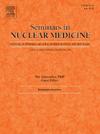自闭症谱系障碍的正电子发射断层扫描:现状和未来展望。
IF 5.9
2区 医学
Q1 RADIOLOGY, NUCLEAR MEDICINE & MEDICAL IMAGING
引用次数: 0
摘要
自闭症谱系障碍(ASD)是一种复杂的神经发育疾病,其特征是社会沟通障碍和重复行为的存在。虽然已知遗传和环境因素都有助于ASD,但其确切原因尚不清楚。分子成像技术的进步,尤其是正电子发射断层扫描(PET),提高了我们研究ASD神经生物学机制的能力。PET为脑代谢、神经递质系统、神经炎症和突触密度提供了有价值的见解。本文综述了PET成像对理解ASD病理生理的贡献,重点介绍了PET成像技术和新型放射性示踪剂的最新进展。这些创新可能会导致更准确的诊断和靶向治疗策略的生物标志物。随着PET技术的不断完善,它在推进ASD研究和临床应用方面具有巨大的潜力。本文章由计算机程序翻译,如有差异,请以英文原文为准。
Positron Emission Tomography in Autism Spectrum Disorder: Current Status and Future Perspectives
Autism Spectrum Disorder (ASD) is a complex neurodevelopmental condition marked by impairments in social communication and the presence of repetitive behaviors. While both genetic and environmental factors are known to contribute to ASD, its precise causes remain unclear. Advances in molecular imaging, particularly positron emission tomography (PET), have enhanced our ability to investigate the neurobiological mechanisms underlying ASD. PET offers valuable insights into brain metabolism, neurotransmitter systems, neuroinflammation, and synaptic density. This review highlights the contributions of PET imaging to understanding the pathophysiology of ASD, focusing on recent advancements in technology and novel radiotracers. These innovations may lead to more accurate biomarkers for diagnosis and targeted therapeutic strategies. As PET technology continues to improve, it holds significant potential for advancing ASD research and clinical applications.
求助全文
通过发布文献求助,成功后即可免费获取论文全文。
去求助
来源期刊

Seminars in nuclear medicine
医学-核医学
CiteScore
9.80
自引率
6.10%
发文量
86
审稿时长
14 days
期刊介绍:
Seminars in Nuclear Medicine is the leading review journal in nuclear medicine. Each issue brings you expert reviews and commentary on a single topic as selected by the Editors. The journal contains extensive coverage of the field of nuclear medicine, including PET, SPECT, and other molecular imaging studies, and related imaging studies. Full-color illustrations are used throughout to highlight important findings. Seminars is included in PubMed/Medline, Thomson/ISI, and other major scientific indexes.
 求助内容:
求助内容: 应助结果提醒方式:
应助结果提醒方式:


